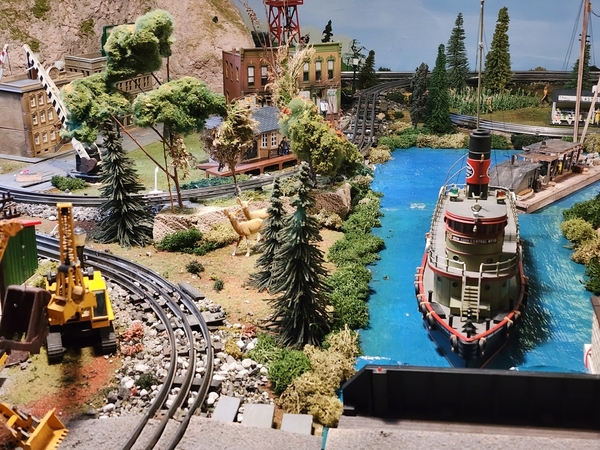IMO, one of the highest and best uses for a train layout is to turn it into a museum of sorts. Among other things, doing so enables the layout to transcend the trains (as wonderful and charming as they are) and those with no interest whatsoever in trains can still find the layout to be appealing.
This can be done by having the trains, structures and scenery highly focused so a single, or at most, a few, railroad(s) and location(s) are featured on the layout.
One of our Forum members has done a splendid job of this by featuring two locations, Schenectady, NY and Wildwood, NJ, on his layout, and the primary railroad featured on his layout is a fictitious one, the name of which indicates that it's an upstate, NY railroad.
I have had the privilege of visiting this museum layout in person.
Another Forum friend has a larger layout that features several distant locations, including the Horseshoe Curve, the Delaware River Valley in Pennsylvania and a ski resort in Colorado (Winter Park?), and a couple of other locations. His luxury of space makes his expansive around the walls museum layout with several vignettes work very well.
Others on the Forum have also posted photos and videos showing their outstanding museum-like layouts, many of which have been featured in the OGR and CTT magazines.
If you have been following my Forum posts, you know that I have endeavored to add features to my layout so it is reminiscent of the Putnam Division of the NY Central (The Put). Indeed, earlier today I posted 2 videos under other Forum topics pretending to go back in time and show trains running along The Put.
I picked The Put because I only have a half basement where my layout is located, it is at best moderate in size (35 feet long and 3 to 4 feet wide), I am a lifelong resident of Westchester County NY where The Put was primarily located, many of my locomotives and train cars are pretty good models of what ran on The Put, among other reasons that I will share later.
I don't pretend to have the extraordinary model railroading skills of the creators of the other 2 layouts mentioned above. However, I have had a lot of fun during the past few years making my layout more like a model of The Put, thereby gradually making it more like a museum of sorts.
If you like the idea of turning your layout into a museum of sorts, you don't need to be a brilliant modeler to do it. Believe me, if I can do it, you can do it.
Would love to know what some of you folks think about this subject. I can think of numerous advantages for having a highly focused, museum-like layout, which I will share during the next day or two.
In the meantime, what do you think?
Arnold




 I was probably last there more than 10 years ago, and it was wonderful. The big speakers transmitting the freight train sounds blew my socks off
I was probably last there more than 10 years ago, and it was wonderful. The big speakers transmitting the freight train sounds blew my socks off 





